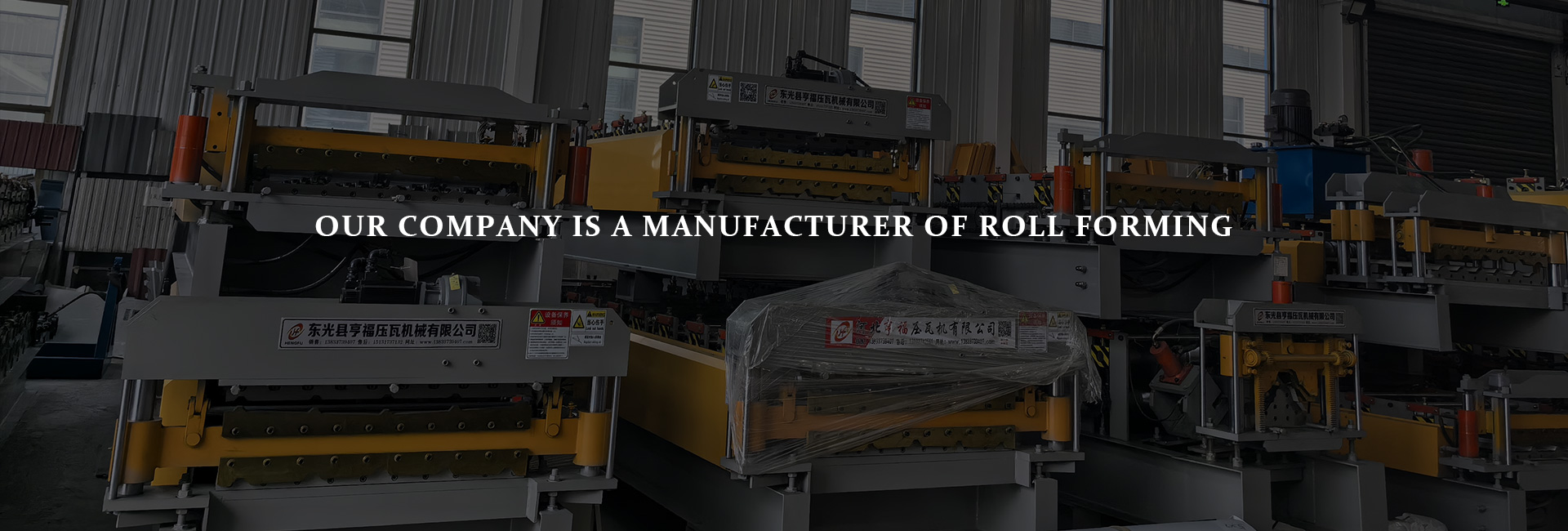Working Principle and Operation Guide for Cable Tray Roll Forming Machines
writer:Hengfu release time:2024-10-02 23:56:19 Views:125frequency
Cable tray roll forming machines are essential equipment for manufacturing cable trays, widely used in construction, industrial, and power engineering sectors. Cable trays support and protect cable systems, making them safer and more organized. Understanding the working principle and operation guide for cable tray roll forming machines is crucial for improving production efficiency and ensuring product quality. This article will detail the working principle and operation guide to help you effectively use and maintain the equipment.

I. Working Principle of Cable Tray Roll Forming Machines
Cable tray roll forming machines process metal sheets into cable trays through a series of steps. The working principle is as follows:
1. Raw Material Preparation
The raw materials used are typically metal coils such as galvanized steel or stainless steel. These materials are first unwound by the decoiler to ensure they are flat.
2. Feeding System
The feeding system is responsible for moving the metal sheets into the forming machine. This includes feed rollers and drive mechanisms, which ensure that the material is fed evenly and continuously into the forming area.
3. Preprocessing
Before forming, the metal sheets may require preprocessing such as cutting, punching, or bending to meet production requirements.
4. Forming Process
Roll Forming: Multiple forming rollers gradually press and bend the metal sheets into the basic shape of the cable tray. Each roller handles different forming operations to ensure the final product meets specifications.
Cooling and Adjustment: The formed metal trays are cooled by a cooling system and then adjusted by a trimming device to ensure product quality.
5. Cutting and Additional Processing
After forming, the cable trays are cut to the required length by a cutting device. Additional processing such as punching or edge treatment may also be required to meet specific installation requirements.
6. Inspection and Packaging
The finished cable trays undergo quality inspection to check their dimensions, shape, and surface quality. Products that meet the standards are then packaged and prepared for shipment.
II. Operation Guide for Cable Tray Roll Forming Machines
To ensure the smooth operation of the cable tray roll forming machine and the production of high-quality products, follow these guidelines:
1. Equipment Preparation
Before operation, inspect all components of the machine, such as the decoiler, feeding system, forming rollers, and cutting device. Ensure the equipment is in good condition and make necessary adjustments according to the operation manual.
2. Raw Material Inspection
Ensure the metal coils used meet production requirements. Check the thickness, width, and surface quality of the materials to avoid defects.
3. Parameter Setting
Set the machine's working parameters according to production needs, including roller spacing, forming angles, and feeding speeds. Ensure these parameters match the design specifications of the cable trays.
4. Operation Procedure
Place the metal coils into the feeding system, start the machine, and observe its operation. Ensure the material is fed evenly into the forming area and monitor the product quality throughout the production process.
Regularly check the dimensions and shape of the products during production and adjust the roller positions and pressure as needed to meet requirements.
5. Safety Measures
Wear appropriate safety gear such as gloves and goggles when operating the machine. Keep the operation area clean to prevent debris from interfering with equipment operation.
Familiarize yourself with the machine's emergency stop functions. Stop the machine immediately if any abnormalities occur to prevent equipment damage and personal injury.
6. Regular Maintenance
Perform regular maintenance on the machine, including lubricating rollers, checking the electrical system, and cleaning the cooling system. Keeping the equipment in good condition helps extend its lifespan and maintain production efficiency.
7. Training for Operators
Provide systematic training for operators to ensure they understand correct operation methods and safety precautions. Conduct regular skill training and performance assessments to enhance operator expertise.
III. Maintenance and Troubleshooting
1. Common Issues
Inaccurate Forming: This may be due to incorrect roller positions, improper material settings, or equipment wear. Check and adjust roller positions and settings, and regularly replace worn parts.
Feeding Issues: Problems may arise from worn feed rollers or material jams. Inspect the feeding system and clear any obstructions.
2. Maintenance Recommendations
Lubrication: Regularly lubricate the machine’s moving parts to ensure smooth operation.
Electrical System Check: Periodically check the electrical system connections and functions to ensure proper operation.
Equipment Cleaning: Keep the equipment clean to prevent dust and debris from affecting performance.
IV. Summary
Cable tray roll forming machines are critical for producing cable trays, with the working principle involving raw material preparation, feeding, preprocessing, forming, cutting, additional processing, and inspection. Mastering proper operation methods and maintenance techniques ensures smooth equipment operation and high product quality. Choosing high-quality machines and following detailed operation and maintenance guidelines will help improve production efficiency and product reliability. If you have any questions about cable tray roll forming machines or need further information, please feel free to contact us. We are here to provide professional advice and solutions.







